Midsummer at Stonehenge 2023
→ Dandavats
Read More...
Websites from the ISKCON Universe
In a recent interview, Visnu Murti Das, the driving force behind Vanipedia, shared an inspiring vision for the online platform and the new BLS Vani-Village project in Radhadesh – Belgium. With a passionate call for dedicated devotees, talented writers, and researchers to assist the platform, Vanipedia is poised to become a beacon of knowledge and […]
The post Vanipedia Expands with New Vani-Village Project in Belgium appeared first on ISKCON News.
 Sripada Hrdayananda Babaji Maharaja was born in Radha-kunda and has been a pujari for 78 years. He lives next to the Radha-Damodar Temple. When, at the beginning of an interview, Babaji Maharaja was asked if he knew Srila Prabhupada, he began to cry. He said, “Never have I seen anyone do sadhana as he did. I have lived all my life in Vraja, and I have never seen anyone like him. Prabhupada did many arduous things. He worked very hard there at the Radha-Damodar Temple. At that time it was austere, undeveloped, and very muddy and dirty, with no facilities.
Sripada Hrdayananda Babaji Maharaja was born in Radha-kunda and has been a pujari for 78 years. He lives next to the Radha-Damodar Temple. When, at the beginning of an interview, Babaji Maharaja was asked if he knew Srila Prabhupada, he began to cry. He said, “Never have I seen anyone do sadhana as he did. I have lived all my life in Vraja, and I have never seen anyone like him. Prabhupada did many arduous things. He worked very hard there at the Radha-Damodar Temple. At that time it was austere, undeveloped, and very muddy and dirty, with no facilities.
“Many years later, when I heard that it was actually he who had been chosen by Chaitanya Mahaprabhu to spread the Hare Krishna maha-mantra around the world, I was not surprised. Prabhupada spread this Krishna consciousness by the mercy of Rupa Gosvami. Prabhupada used to pray to Rupa Gosvami, ‘You please give me your mercy.’ And then he got that mercy. I know this because I saw some things he did at the Radha-Damodar Temple. My room is still located in the same place as it was then, in 1964 or ’65. Many times in the middle of the night, at midnight or 1 or 2 in the morning, I would hear a voice crying from inside the courtyard near Rupa Gosvami’s samadhi-mandir. That voice was calling out and crying, but I did not know what it was, because I was trying to take rest. But one night, on the full moon, I heard that voice again, so I climbed up to the roof of our house and looked down into the Radha-Damodar courtyard. I saw something very amazing. Srila Prabhupada was sweeping the courtyard of Rupa Gosvami’s samadhi. He was bending down with a small broom, and as he swept the ground by the samadhi, he was crying out, ‘He Rupa! He Sanatana! He Gurudeva! Please give me your mercy. Without your mercy, I cannot do anything. Give me the mercy. Give me the strength that I may fulfill your orders.’ Then I realized that it was he who almost every night was calling out as he was sweeping like this.”
Hare Krishna.
Yours in service,
Giriraj Swami
The Bhaktivedanta Research Center (BRC) displayed priceless treasures from their library collection at the 52nd Kolkata Rath Yatra festival held June 20-28th. The Kolkata Rath Yatra is a grand chariot festival celebrated in West Bengal, India. The annual event is organized by the International Society for Krishna Consciousness (ISKCON) and welcomes thousands annually. The booth […]
The post BRC Displays Priceless Treasures to Visitors at Kolkata Ratha Yatra appeared first on ISKCON News.
Nama Kripa Das preparing prasada in an abandoned swimming pool. In June, ISKCON News reported on devotees returning to survey the ISKCON Kherson Temple in Ukraine, which was severely damaged during the ongoing conflict there. Bhakta Max, a native of Kherson, had moved back into the building to remove debris and begin the restoration process. […]
The post Bomb Strikes Kherson Temple in Ukraine, Devotees Vow to Remain and Serve appeared first on ISKCON News.
Yudhistir Govinda Das with Mark Rozell, Dean of the Schar School of Policy and Government at George Mason University. Yudhistir Govinda Das, Director of Communications at ISKCON India, recently was awarded the designation of Fellow in the prestigious International Visitors Leadership Program (IVLP), administered by the United States government. Spanning across notable cities such as […]
The post ISKCON Official Invited by US Government to Participate in Renowned Leadership Program appeared first on ISKCON News.
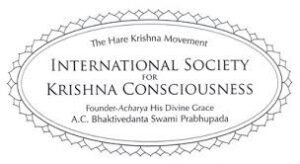 Srila Prabhupada incorporated ISKCON’s on July 13, 1966, in New York City, which corresponds to today on the Vaishnava calendar. One exchange between him and Bhavananda indicates some of the significance of the occasion:
Srila Prabhupada incorporated ISKCON’s on July 13, 1966, in New York City, which corresponds to today on the Vaishnava calendar. One exchange between him and Bhavananda indicates some of the significance of the occasion:
Bhavananda: In Svarup Ganj there’s one big astrologer. So, he saw your photograph, and he said, “This is the face of the most powerful spiritual personality on the planet.”
Prabhupada: [laughs] Hare Krishna.
Brahmananda: Then what else?
Bhavananda: Then he said that “I can tell from his face that he can make a house in which the whole world can live peacefully.”
Devotees: Jaya Prabhupada!
Prabhupada: At least I desire so.
(Morning Walk, July 1, 1975, Denver)
The following are excerpts from the certificate of incorporation:
CERTIFICATE OF INCORPORATION
OF
INTERNATIONAL SOCIETY FOR KRISHNA CONSCIOUSNESS, INC.
(Pursuant to the Religious Corporation Law of the State of New York)
We, the undersigned, for the purpose of forming a corporation pursuant to the Religious Corporation Law of the State of New York, do hereby make, subscribe and acknowledge this certificate as follows:
FIRST: The name of the corporation shall be INTERNATIONAL SOCIETY FOR KRISHNA CONSCIOUSNESS, INC.
SECOND: The purposes for which the corporation is organized are:
(a) To systematically propagate spiritual knowledge to society at large and to educate all peoples in the techniques of spiritual life in order to check the imbalance of values in life and to achieve real unity and peace in the world.
(b) To propagate a consciousness of Krishna as it is revealed in the Bhagawat Gita and Srimad Bhagawatam.
(c) To bring the members of the Society together with each other and nearer to Krishna, the prime entity, and thus to develop the idea, within the members, and humanity, at large, that each soul is part and parcel of the quality of Godhead (Krishna).
(d) To teach and encourage the Samkirtan movement congregational chanting of the holy name of God as revealed in the teachings of Lord Sri Chaitanya Mahaprabhu.
(e) To erect for the members, and for society at large, a holy place of transcendental pastimes, dedicated to the personality of Krishna.
(f) To bring the members closer together for the purpose of teaching a simpler and more natural way of life.
(g) With a view towards achieving the aforementioned purposes, to publish and distribute periodicals, magazines, books and other writings. . . .
IN WITNESS WHEREOF we have made, subscribed, and acknowledged this certificate of incorporation this 13th day of July, 1966.
[signed:] A.C. Bhaktivedanta Swami, Carol Bekar, Raymond Marais
Kamika ekadasi is celebrated as Krishna Paksha ekadasi in the month of Shravan. Observing this ekadasi is considered as auspicious as performing an Ashwamedha Yajna. As Gaudiya Vaishnavas, our main aim during ekadasi is to decrease bodily demands so we can spend more time in seva, especially hearing and chanting about the Lord’s pastimes and name.
It’s recommended to chant extra rounds and stay up all night chanting and hearing the Lord’s glories. It is also auspicious to donate to Vaishnavas and Lord Krishna’s service on ekadasi and we invite our readers to consider this Kamika ekadasi to donate towards the Give To Nrsimha 2023 Fundraiser. We are focusing on the completion and opening of the entire Nrsimhadeva hall and altar by the Fall of 2023 as a forerunner to the Grand Opening of the TOVP in 2024-25 when all the Deities will be relocated into Their new home. Please go to the Give To Nrsimha 2023 Fundraiser page TODAY and help complete this offering to the Lord.
NOTE: Kamika ekadasi is observed on July 13 worldwide. Please refer to your local calendar through www.gopal.home.sk/gcal.
View, download and share the TOVP 2023 Calendar.
The saintly king Yudhisthira Maharaja said, “Oh Supreme Lord, I have heard from You the glories of fasting on Deva-sayani Ekadasi, which occurs during the light fortnight of the month of Ashadha. Now I would like to hear from You the glories of the Ekadasi that occurs during the dark fortnight (krishna paksha) of the month of Shravana (July -August). Oh Govindadeva, please be merciful to me and explain its glories. Oh Supreme Vasudeva, I offer my most humble obeisances unto You.”
The Supreme Lord, Sri Krishna, replied, “Oh King, please listen attentively as I describe the auspicious influence of this holy fast day, which removes all sins.
Narada Muni once asked Lord Brahma about this same topic.‘Oh regent of all beings,’ said Naradji, ‘Oh you who sit upon a water born lotus throne, please tell me the name of the Ekadasi that occurs during the dark fortnight of the sacred month of Shravana. Please also tell me which Deity is to be worshipped on that Holy day, the process one must follow to observe it, and the merit it awards.’
Lord Brahma replied, ‘My dear son Narada, for the benefit of all humanity I shall happily tell you everything you wish to know, for just hearing the glories of the Kamika Ekadasi bestows merit equal to that obtained by one who performs a horse sacrifice. Certainly, great merit is attained by one who worships, and who also meditates on the lotus feet of the four-armed Lord Gadadhara, who holds conchshell, disc, club and lotus in His hands and who is also known as Sridhara, Hari, Vishnu, Madhava, and Madhusudana. And the blessings achieved by such a person/devotee who worships Lord Vishnu exclusively are far greater than those achieved by one who takes a sacred bath in the Ganges at Kashi (Varanasi), in the forest of Naimisharanya, or at Pushkara, which is the only place on the planet where I (Lord Brahma) am formally worshipped.
‘But one who observes this Kamika Ekadasi and also worships Lord Sri Krishna achieves greater merit than one who has darshan of Lord Kedaranatha in the Himalayas, or one who bathes at Kurukshetra during a solar eclipse, or one who donates the whole Earth in charity, including its forests and oceans, or one who bathes in the Gandaki River (where the sacred Saligrams are found) or the Godavari River on a full moon (purnima) day that falls on a Monday when Leo (Simha) and Jupiter (Guru) are conjoined (conjunct).
‘Observing Kamika Ekadasi bestows the same merit as donating a milk-cow and her auspicious calf, along with their feed. On this all auspicious day, whosoever worships Lord Sri Sridhara-deva, Vishnu, is glorified by all the devas, Gandharvas, Pannagas, and Nagas. Those who are afraid of their past sins and completely immersed in sinful materialistic life should at least observe this best of Ekadasis according to their ability and thus attain liberation. This Ekadasi is the purest of all days and the most powerful for removing sins of the native.
‘Oh Naradaji, Lord Sri Hari Himself once said about this Ekadasi, “One who fasts on Kamika Ekadasi attains much more merit than one who studies all the spiritual literatures. Anyone who fasts on this particular day and remains awake throughout the night will never experience the anger of Yamaraja, the King of death personified.”
‘It has been seen that whoever observes Kamika Ekadasi will not have to suffer future births, and in the past too, many yogis of devotion who fasted on this day went to the spiritual world. One should therefore follow in their auspicious footsteps and strictly observe a fast on this most auspicious of Ekadasis.
‘Whosoever worships Lord Sri Hari with Tulsi leaves on this day is freed from all implication of sin. Indeed, he lives untouched by sin, as the lotus leaf, although in the water, is untouched by it. Whosoever offers Lord Sri Hari but a single leaf from the sacred Tulsi tree attains as much merit as one who gives away in charity two hundred grams of gold and eight hundred grams of silver. The Supreme Personality of Godhead is more pleased by one who offers Him a single Tulsi leaf than by one who worships Him with pearls, rubies, topaz, diamonds, lapis lazuli, sapphires, gomeda stones (gomaz), cat’s eye gems, and coral.
‘One who offers Lord Keshava newly grown manjari buds from the Tulsi plant gets rid of all the sins he has committed during this or any other lifetime. Indeed, mere darshana of Tulsi on Kamika Ekadasi removes all sins, and merely touching her and praying to her removes all kinds of disease. One who waters Tulsi devi need never fear the Lord of death, Yamaraja. One who plants or transplants Tulsi on this day will eventually reside with Lord Sri Krishna in His own abode. To Srimati Tulsi devi, who awards liberation in devotional service, one should therefore daily offer one’s full obeisances.
‘Even Chitragupta, Yamaraja’s secretary, cannot calculate the merit obtained by one who offers Srimati Tulsi-devi a perpetually burning ghee lamp. So dear is this sacred Ekadasi to the Supreme Personality of Godhead that all the forefathers of one who offers a bright ghee lamp to Lord Shri Krishna on this day ascend to the heavenly planets and drink the celestial nectar there. Whoever offers a ghee or sesame oil lamp to Shri Krishna on this day is freed from all his sins and enters the abode of Surya, the Sun-god, with a body as bright as ten million lamps. This Ekadasi is so powerful that if one who is unable to fast simply follows the practices as mentioned herein, he is elevated to the heavenly planets, along with all their forefathers.
“Oh, Maharaja Yudhisthira”, Lord Shri Krishna concluded, “These were the words of Prajapati Brahma to his son Narada Muni concerning the incalculable glories of this Kamika Ekadasi, which removes all sins. This sacred day nullifies even the sin of killing a brahmana or the sin of killing an unborn child in the womb, and it promotes one to the spiritual world by making one supremely meritorious.
One who kills the innocent, i.e., a brahmin, a child in the womb, a pious and spotless woman, etc., and then later hears about the glories of Kamika Ekadasi will be relieved of the reaction to one’s sins. However, one should NOT think beforehand that one can kill a Brahmin or other innocent people and then go unpunished simply by hearing of this Ekadasi. Such knowing committing of sin is an abomination.”Whosoever hears these glories of the Kamika Ekadasi with faith becomes free of all sins and returns home, back to Godhead – Vishnu-loka, Vaikuntha. Thus ends the narration of the glories of the Sravana-krishna Ekadasi or Kamika Ekadasi, from the Brahma-vaivarta Purana.
This article has been used courtesy of ISKCON Desire Tree).
Once there lived a strong and powerful warrior. During one of his adventures the warrior happened to kill a pious devotee of Sridhara Vishnu. The warrior wanted to perform austerities to get rid of the sin of killing a pious man.
He inquired with the learned saints about an austerity that would help in cleansing the sins of killing a virtuous devotee of Vishnu. The saints asked him to perform the Ekadasi fasting falling during the waning phase of moon in Shravana month as per traditional panchang followed in North India.
The warrior performed the Ekadasi fasting by offering prayers to the Sridhara form of Lord Vishnu. After the fasting and prayers, he gave food to poor people and helped them financially to overcome their difficulties.
Pleased with the devotion of the warrior, Vishnu appeared before him in His Sridhara form and gave him liberation from the sin of accidentally killing a pious man.
Visit: www.tovp.org
Support: https://tovp.org/donate/
Email: tovpinfo@gmail.com
Facebook: www.facebook.com/tovp.mayapur
YouTube: www.youtube.com/c/TOVPinfoTube
Twitter: https://twitter.com/TOVP2022
Telegram: https://t.me/TOVP_GRAM
WhatsApp: https://chat.whatsapp.com/LQqFCRU5H1xJA5PV2hXKrA
Instagram: https://m.tovp.org/tovpinstagram
App: https://m.tovp.org/app
News & Texts: https://m.tovp.org/newstexts
RSS News Feed: https://tovp.org/rss2/
Store: https://tovp.org/tovp-gift-store/
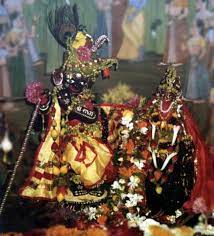
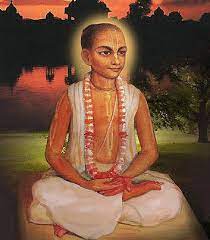
Srila Prabhupada gives the following information about Lokanatha Goswami: ” Lokanatha Goswami was a personal associate of Sri Chaitanya Mahaprabhu and a great devotee of the Lord.
He was a resident of a village named Talakhadi in the district of Yashohara in Bengal. Previously he lived in Kachnapara. His father’s name was Padmanabha, and his only younger brother was Pragalbha. Following the orders of Sri Chaitanya Mahaprabhu, Sri Lokanatha went to Vrindavana to live. He established a temple named Gokulananda.”
Narottama Dasa Thakur had been having many dreams in which Mahaprabhu instructed him to go to Vrindavan and take shelter of the lotus feet of His confidential devotee Srila Lokanatha Das Goswami who would give diksha to him.
He also told Narottama to find Srila Rupa Goswami, Srila Sanatan Goswami and Srila Jiva Goswami and to keep their holy association. After arriving in Vrindavan, Narottama found that Rupa and Sanatan had already left the world but he found there Srila Jiva Goswami, Srila Lokanatha Das Goswami, Srila Krishna Das Kaviraj Goswami and many other great Vaishnavas who gave him their company.
Narottama became the student of Jiva Goswami and petitioned Lokanatha Goswami to give him diksha. Lokanatha refused him.
Lokanatha Goswami had decided that he would never accept any disciples and he lived in an extremely austere way in Vrindavan, living under a different tree every night.
Narottama felt great sadness upon being refused by Srila Lokanatha, and he told him, “I can only take my initiation from you. Sriman Mahaprabhu has told me that you will give me diksha, so until then I will wait.” Narottama tried to serve his Guru but the Goswami would allow no one to serve him. Narottama thought, “If he will not even stay under the same tree for more than one night then what kind of service can I do for him?”
After a while Narottama noticed that Srila Lokanatha Prabhu would always go to the same place to pass stool and he began to think that although Lokanatha had refused to give him any service for over two years, if he could clean that place every day then at last he would have some service. Narottama was fixed in his resolve that he must take diksha from Srila Lokanatha Goswami, as this was the order of Mahaprabhu.
Very soon Lokanatha Goswami began to notice, “I come here every day to pass stool and it seems that someone is cleaning this place after me. Who can be doing this?” So one night from a hidden place Lokanatha saw that at midnight Narottama came and very happily cleaned that place.
Lokanatha knew that Narottama was the son of the famous King Krishnananda Datta. He was greatly astonished and confronted Narottama, “Why are you, a prince of high noble birth, coming each night and cleaning this dirty place?”
Narottama replied, “Prabhu, I need your mercy. Without your mercy I cannot live. Your vow is that you will not accept any disciples, but by the order of Sriman Mahaprabhu, it is my vow that I must have your connection. I don’t know when you will give me your mercy but you must accept me as your disciple.” So after refusing Narottama eighteen times, finally Srila Lokanatha Das Goswami took Narottama Das and gave him diksha.
Srila Lokanatha Goswami, in his ripe old age, while performing bhajan in Khadiravan in Khayara Gram, passed away and entered into the eternal unmanifest pastimes of the Lord. At that place is a kunda called Sri Yugala Kunda. On the banks of that kunda, Srila Lokanatha Goswami entered into samadhi.
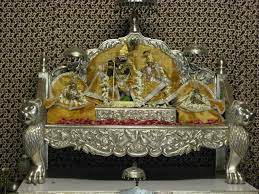
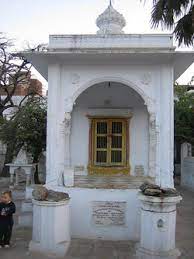
Team ARYA visits Mpumalanga. In the heart of South Africa, a dedicated team of devotees has come together to form the African Ratha Yatra Alliance or ARYA. Led by Baladev Jagannath Das, the coordinator of programs and logistics, ARYA has been enthusiastically working to bring the devotional vibrancy of Ratha Yatra festivals to different corners […]
The post Groundbreaking Initiative Expanding Ratha Yatra Festivals in Africa appeared first on ISKCON News.